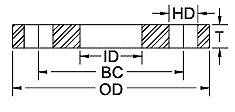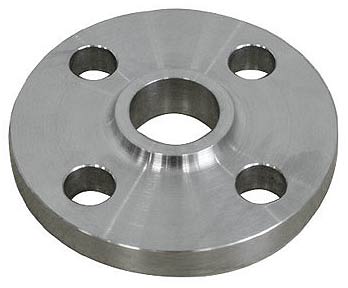Slip on Flanges
Slip-on flanges are a popular type of pipe flanges. These are type of flanges that slide over the end of piping and then welded in place. These flanges are ideal for lower pressure applications. These are easily fitted and welded into different pipes. Welding reduces fabrication costs of these pipes. These are available in wide variety of sizes and applications.
Materials used:
Common materials used are as follows:
- Stainless steel
- Brass
- Steel
- Alloy Steel
- Aluminum
- Plastics
- Titanium
- Monels
- Carbon steel
- Alloy titanium etc.
Buying Tips Factors to consider before buying slip-on
flanges are as follows:
- Size
- Design Standard
- Material
- Normal Pressure
- Face Type
- Flange Diameter
- Flange Thickness
- Durability
- Corrosion resistant
|
Why slip on flanges are preferred to welding neck flanges?
For many users, slip on flanges continue to be preferred to welding
neck flanges because of the following reasons:
- On account of their initially lower cost.
- The reduced accuracy needed in cutting the pipe to length.
- The greater ease of alignment of the assembly.
- The calculated strength of slip-on flanges under internal
pressure is approximately two-thirds that of welding neck flanges.
 How
to measure slip-on flanges?
How
to measure slip-on flanges?
Take the measurements of:
- OD: Outside Diameter
- ID: Inside Diameter
- BC: Bolt Circle
- HD: Hole diameter
 Key Features:
Key Features:
Some important features are as follows:
- One size fits all pipe schedules.
- Fabricators can more easily cut pipe to length for slip-on
flanges.
- The smaller thickness of this flange allows for easier alignment
of bolting holes.
- They are generally not preferred for high pressure temperature
environments.
Advantages of slip on flanges:
- Low cost installation
- Less time needed to spent on ensuring the accuracy of the cut
pipe
- They are somewhat easier to align
- The slip-on flanges have low hub because the pipe slips into the
flange before welding
- The flange is welded both inside and outside to provide
sufficient strength
- They prevent leakage
The points mentioned below will be a guide for the buyers:
 How
to measure slip-on flanges?
How
to measure slip-on flanges? Key Features:
Key Features: